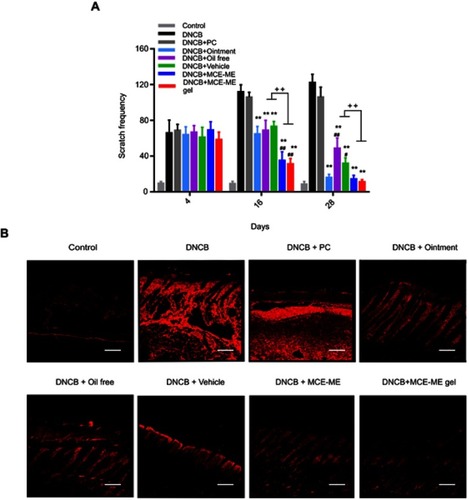Figures & data
Figure 1 The AFM image of FK506 MCE ME.
Abbreviations: AFM, atomic force microscope; FK506, tacrolimus; FK506 MCE ME, tacrolimus loaded microemulsion based on menthol/camphor eutectic.
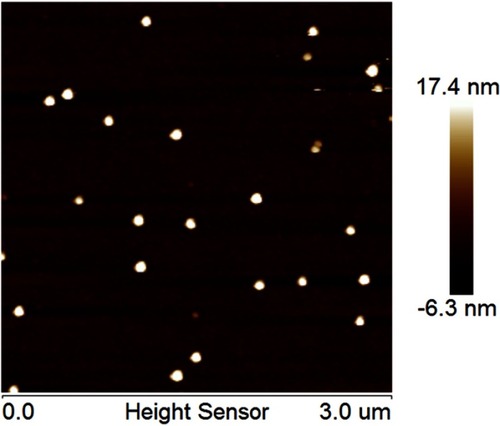
Table 1 Cumulative permeated amount, flux, and retention of FK506 from different formulations after 24-hr penetration in vitro (mean ± SD, n=6)
Figure 2 In vitro skin penetration of FK506 from different formulations (A) and skin retention of FK506 after 24 h penetration (B).
Note: **P<0.001.
Abbreviations: FK506, tacrolimus; PC, The solution of 0.1% tacrolimus (FK506,w/v) dissolved in propylene carbonate; Oil free, 0.1% (w/v) FK506 solution containing the same surfactant and cosurfactant as microemulsion but without menthol/camphor eutectic; Ointment, 0.1%(w/w) FK506 commercial ointment; MCE ME, 0.1% (w/v) FK506 microemulsion based on menthol/camphor eutectic; MCE ME gel, 0.1% (w/w) FK506 microemulsion gel based on menthol/camphor eutectic; h, hours; SD, standard deviation.
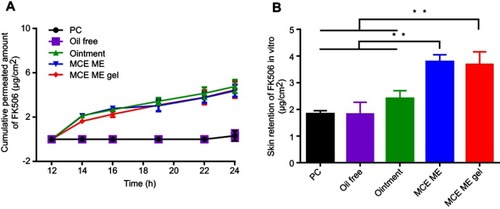
Figure 3 Cell viability of HaCaT cells after incubation with MCE ME vehicle of different concentrations for 12 h and 24 h, respectively.
Abbreviations: HaCaT, immortal human keratinocytes; MCE, ME vehicle; Microemulsion based on menthol/camphor eutectic without FK506; SD, standard deviation.
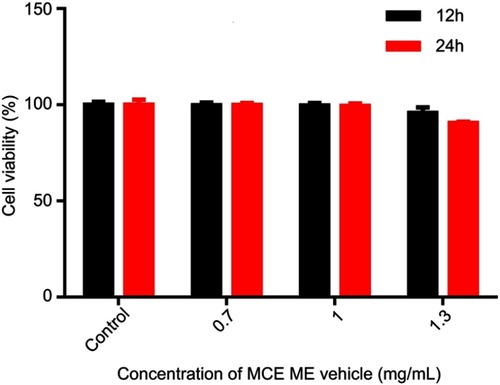
Figure 4 Schematic diagram of the experimental procedure (A); effects of different formulations containing 0.1% FK506 on dermatitis scores throughout the experiment (B); and clinical features of AD-like skin lesions in the end of experiment (C).
Notes: *P<0.05 in comparison with DNCB; **P<0.001 in comparison with DNCB; #P<0.05 in comparison with DNCB + Ointment; ##P<0.001 in comparison with DNCB + Ointment; ++P<0.001.
Abbreviations: AD, atopic dermatitis; DNCB, 1–chloro–2,4–dinitrobenzene; FK506, tacrolimus; Control, healthy mice with shaved dorsal region; DNCB, AD-induced mice without drug treatment; DNCB + PC, AD-induced mice treated with propylene carbonate containing 0.1% (w/v) FK506; DNCB + Ointment; AD-induced mice treated with commercial ointment containing 0.1% (w/w) FK506; DNCB + Oil free, AD-induced mice treated with Oil free containing 0.1% (w/v) FK506; DNCB + Vehicle, AD-induced mice treated with microemulsion based on menthol/camphor eutectic vehicle without FK506; DNCB + MCE ME, AD-induced mice treated with microemulsion based on menthol/camphor eutectic containing 0.1% (w/v) FK506; DNCB + MCE ME gel, AD-induced mice treated with microemulsion based on menthol/camphor eutectic gel containing 0.1% (w/w) FK506; SD, standard deviation.
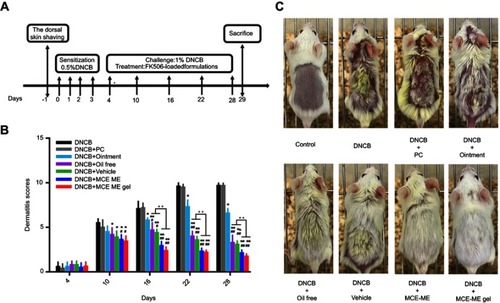
Figure 5 The ear thickness (A), spleen index (B) on day 28, and TEWL (C) of the mice treated with different formulations throughout the experiment.
Notes: *P<0.05 in comparison with DNCB; **P<0.001 in comparison with DNCB; #P<0.05 in comparison with DNCB + Ointment; ##P<0.001 in comparison with DNCB +Ointment; +P<0.05; ++P<0.001.
Abbreviations: AD, atopic dermatitis; DNCB, 1–chloro–2,4–dinitrobenzene; FK506, tacrolimus; TEWL, transdermal water loss; Control, healthy mice with shaved dorsal region; DNCB, AD-induced mice without drug treatment; DNCB + PC, AD-induced mice treated with propylene carbonate containing 0.1% (w/v) FK506; DNCB + Ointment: AD-induced mice treated with commercial ointment containing 0.1% (w/w) FK506; DNCB + Oil free, AD-induced mice treated with Oil free containing 0.1% (w/v) FK506; DNCB + Vehicle; AD-induced mice treated with microemulsion based on menthol/camphor eutectic vehicle without FK506; DNCB + MCE ME, AD-induced mice treated with microemulsion based on menthol/camphor eutectic containing 0.1% (w/v) FK506; DNCB + MCE ME gel, AD-induced mice treated with microemulsion based on menthol/camphor eutectic gel containing 0.1% (w/w) FK506; SD, standard deviation.
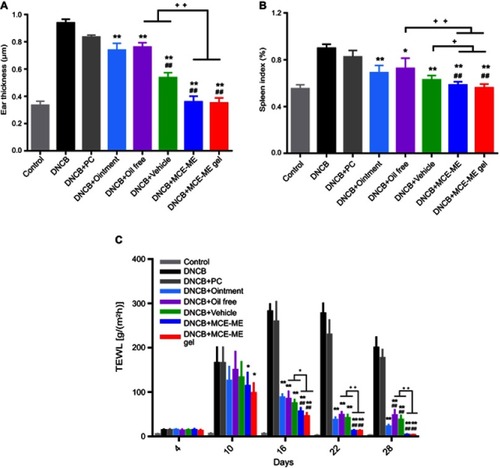
Figure 6 Histological features of the skin treated with different formulations in AD mouse model. The sections were stained with hematoxylin and eosin (A) and toluidine blue (B), respectively.
Abbreviations: AD, atopic dermatitis; DNCB, 1–chloro–2,4–dinitrobenzene; FK506, tacrolimus; Control, healthy mice with shaved dorsal region; DNCB, AD-induced mice without drug treatment; DNCB + PC, AD-induced mice treated with propylene carbonate containing 0.1% (w/v) FK506; DNCB + Ointment; AD-induced mice treated with commercial ointment containing 0.1% (w/w) FK506; DNCB + Oil free; AD-induced mice treated with Oil free containing 0.1% (w/v) FK506; DNCB + Vehicle, AD-induced mice treated with microemulsion based on menthol/camphor eutectic vehicle without FK506; DNCB + MCE ME, AD-induced mice treated with microemulsion based on menthol/camphor eutectic containing 0.1% (w/v) FK506; DNCB + MCE ME gel, AD-induced mice treated with microemulsion based on menthol/camphor eutectic gel containing 0.1% (w/w) FK506.
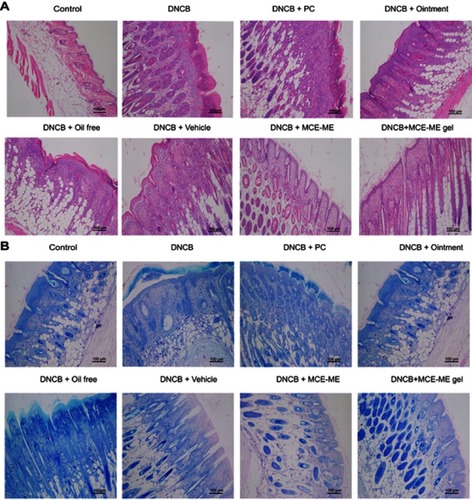
Figure 7 Effects of different formulations on serum total IgE.
Notes: *P<0.05 in comparison with DNCB; **P<0.001 in comparison with DNCB; #P<0.05 in comparison with DNCB + Ointment; ##P<0.001 in comparison with DNCB +Ointment; +P<0.05; ++P<0.001.
Abbreviations: AD, atopic dermatitis; DNCB, 1–chloro–2,4–dinitrobenzene; FK506, tacrolimus; Control, healthy mice with shaved dorsal region; DNCB, AD-induced mice without drug treatment; DNCB + PC, AD-induced mice treated with propylene carbonate containing 0.1% (w/v) FK506; DNCB + Ointment: AD-induced mice treated with commercial ointment containing 0.1% (w/w) FK506; DNCB + Oil free, AD-induced mice treated with Oil free containing 0.1% (w/v) FK506; DNCB + Vehicle, AD-induced mice treated with microemulsion based on menthol/camphor eutectic vehicle without FK506; DNCB + MCE ME, AD-induced mice treated with microemulsion based on menthol/camphor eutectic containing 0.1% (w/v) FK506; DNCB + MCE ME gel, AD-induced mice treated with microemulsion based on menthol/camphor eutectic gel containing 0.1% (w/w) FK506; SD, standard deviation.
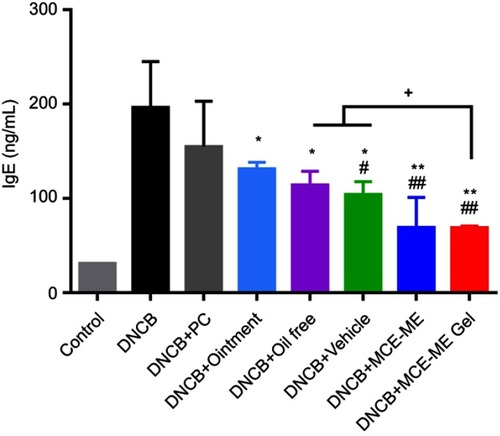
Figure 8 Inhibition effects of different formulations on scratch frequency (A) and substance P expression (B).
Notes: *P<0.05 in comparison with DNCB; **P<0.001 in comparison with DNCB; #P<0.05 in comparison with DNCB + Ointment; ##P<0.001 in comparison with DNCB +Ointment; +P<0.05; ++P<0.001.
Abbreviations: AD, atopic dermatitis; DNCB, 1–chloro–2,4–dinitrobenzene; FK506, tacrolimus; Control, healthy mice with shaved dorsal region; DNCB, AD-induced mice without drug treatment; DNCB + PC, AD-induced mice treated with propylene carbonate containing 0.1% (w/v) FK506; DNCB + Ointment: AD-induced mice treated with commercial ointment containing 0.1% (w/w) FK506; DNCB + Oil free, AD-induced mice treated with Oil free containing 0.1% (w/v) FK506; DNCB + Vehicle, AD-induced mice treated with microemulsion based on menthol/camphor eutectic vehicle without FK506; DNCB + MCE ME, AD-induced mice treated with microemulsion based on menthol/camphor eutectic containing 0.1% (w/v) FK506; DNCB + MCE ME gel, AD-induced mice treated with microemulsion based on menthol/camphor eutectic gel containing 0.1% (w/w) FK506; SD, standard deviation.
